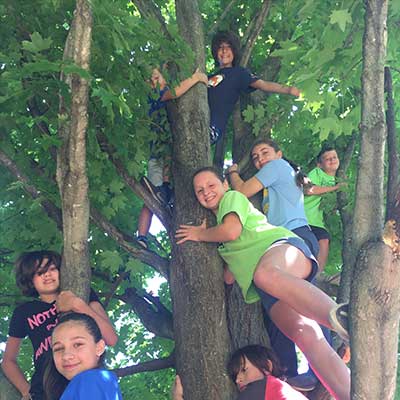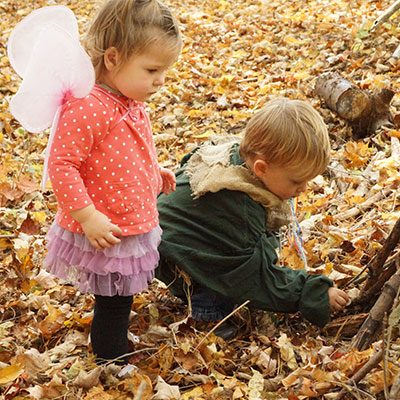Thinking Outside the Box
Week of July 4 – July 10, 2021

Many of us who love the outdoors are familiar with the multitude of benefits that nature provides. A sense of wonder for the world is something that brings us together, helps us make valuable connections, and is one of the main reasons I became an educator here at Baltimore Woods. This inspired awe, for me, is rooted deeply in my childhood. Playing outside, climbing trees, flipping over rocks, and chasing fireflies were all parts of growing up that have instilled a deep respect for nature within me.
Many studies show that green spaces, unstructured play, and exploration are also beneficial for a child’s development (socially, cognitively, emotionally, and physically). A sense of wonder is important to instill at an early age, when a child is rapidly developing and learning. Children are the world’s best scientists and artists, with wild imaginations and endless creativity. A pile of sticks can transform itself into a pirate fort, a pile of rocks can become a spiraling sun, and red berries could make a beautiful dinner platter for a fairy banquet. Young people can generate many different uses for “regular” objects that for adults may simply go unnoticed.
This type of creativity, known as divergent thinking, is the ability to interpret questions and see answers in many different ways. One scientific study found that 98% of kindergarten-aged children measured at genius-level for divergent thinking. However, the researchers also found that genius-level scores dropped drastically as children aged — from 50% five years later, down to 12% as high schoolers… to less than 2% in adults!
Sir Ken Robinson, a famous educationist, used this study to champion the idea of fostering, rather than stifling, creativity within the traditional public school system. He argued that creativity is incredibly important for innovation, culture, and advancements in society. A sense of curiosity, wonder, and the motivation to learn are all important to nurture in children, and is equally important to continue to nurture into adulthood.
For the vast majority of adults, our imaginations (and therefore our innovation potential) have faded with time. But that does not mean it is lost beyond reach. If we can access our curiosity, schedule unstructured time to simply explore, and focus on rebuilding that childlike wonder for ourselves, we might all find more joy in learning, and the world may be a more creative place.
To learn more about divergent thinking and childhood imagination, check out these references: Youtube video: “Changing Education Paradigms” by Sir Ken Robison (animated by Cognitive Media) from his talk at The Royal Society for Arts, Manufactures, and Commerce





